TrueCrypt encourages users to take other key measures
Unfortunately for fans of popular encryption software, TrueCrypt on the program's official website has a red text warning that TrueCrypt is no longer safe to continue using.
The text is highlighted in red when opening the Sourceforge homepage of TrueCrypt, explaining that due to unresolved security errors, TrueCrypt is no longer a secure encryption software - " WARNING: Using TrueCrypt is not secure as it may contain unfixed security issuee ".

Even if you access the TrueCrypt homepage on Google Chrome using the WOT plugin, the above warning will appear
Just below this text, the application developer further informed that the home page exists for the sole purpose of helping users transmit TrueCrypt-encoded data to another solution, such as feces. encrypted region or virtual disk image. At the same time, the site claims that TrueCrypt stopped growing in May 2014 after Microsoft officially stopped supporting Windows XP.
This statement of TrueCrypt surprised many people.
After more than a decade of development, this free open source encryption tool has been used by many people to protect sensitive files or even encrypt the entire computer partition.
Even in 2013, when allegations were made that the NSA could decrypt a lot of encrypted information on the Internet, TrueCrypt supporters donated a large sum of money to prove that the software was extremely safe. all. The results of phase 1 of the audit show that there is no evidence of data leakage from TrueCrypt. This may indicate the user's preference for this encryption tool.
Despite being loved and widely used, but after the statement of TrueCrypt, we encourage users to switch to a new protection measure.
Specifically, on the TrueCrypt home page, in addition to information about the level of TrueCrypt security, the developer also gives instructions to transfer encrypted data from TrueCrypt to another Microsoft protection solution, BitLocker .
You can follow the following instructions to transfer data:
If the user is already using TrueCrypt to encrypt the system partition on the machine, the following instructions can be followed:
Step 1 : Open Windows Explorer window.

Step 2: Right-click on drive C ( or another drive where you installed Windows ) and select Turn on BitLocker . You have successfully transferred that encryption information to the protection of BitLocker .
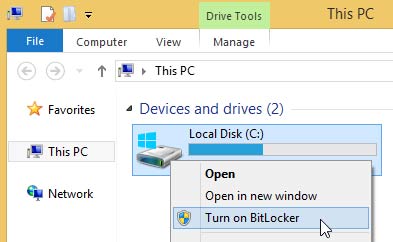
Another way to open BitLocker is to search for this keyword in the Start menu.
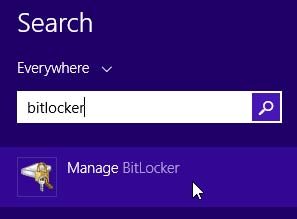
Step 3 : Finally, decrypt the computer hard drive with TrueCrypt : access the System menu and use the option Permanently Decrypt System Drive.
On the other hand, if there is no hard drive encrypted with TrueCrypt on the user's computer, you can follow the instructions below :
Step 1 : If the user has a hard drive that is large enough to store all of the encrypted data that you want to transfer to BitLocker , you can directly encrypt the drive in BitLocker. You can do this very easily: right-click the drive and select Turn on BitLocker . You need to have administrative rights to use this option.
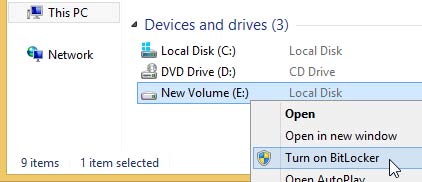
Step 2 : Copy all data from the hard drive encrypted by TrueCrypt to the hard drive encrypted by BitLocker.
In case the user does not have an empty hard drive on the user's computer, just decrypt the encrypted TrueCrypt drive . To do this, select the hard drive in the TrueCrypt window, open the Volumes menu and select Permanently Decrypt .
Next, users only need to re-encrypt the drive with BitLocker .
To install a drive encrypted by BitLocker , users only need to open the partition in Windows Explorer .
To uninstall a removable drive encrypted by BitLocker , right-click on the drive or click the Safely Remove icon on the toolbar and select Eject .
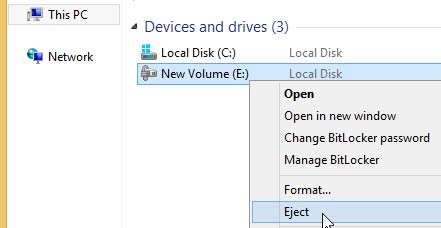
To uninstall a fixed drive protected by BitLocker , you can use the Offline option in the right-click menu of the drive in the Disk Management window .
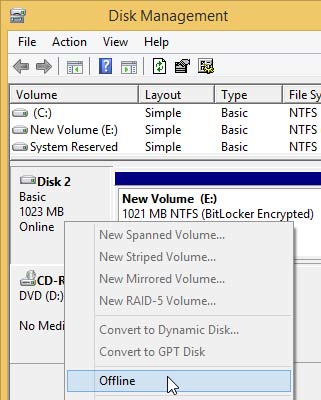
To reinstall the disk, use the Online option.
If the user has a folder containing files protected by TrueCrypt, follow the instructions below:
Step 1: Open the Computer Management window by right-clicking on the Computer or PC icon and selecting Manage .
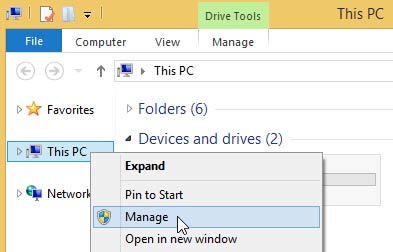
Step 2 : Select the Disk Management icon.
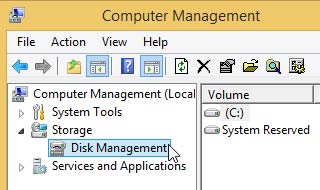
Another way is to search in Search Charm with the keyword " disk ".
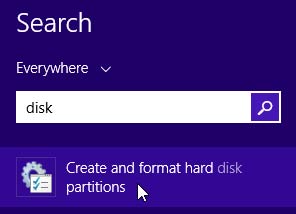
Step 3: Open the Action menu in the Disk Management window and select Create VHD to create a new virtual drive file.
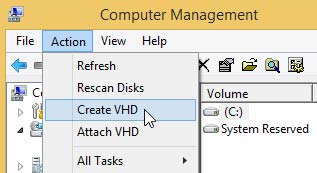
Step 4 : Create and attach a new virtual disk file.
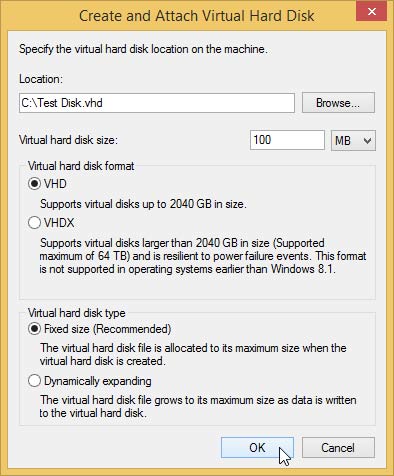
Step 5: Start the new virtual drive: Right-click the new drive icon and select Initialize Disk .
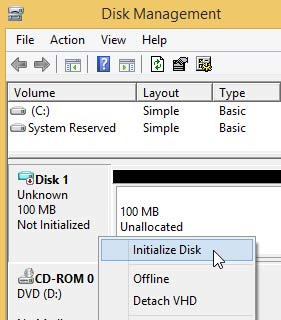
Step 6 : Create a partition on the virtual drive: Right-click the unused volume on the virtual drive and select New Simple Volume .
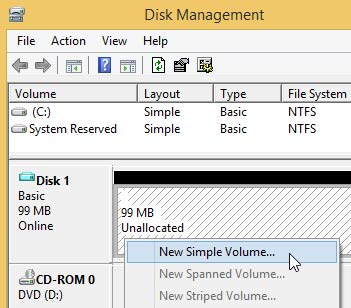
Step 7 : Encrypt the new virtual drive with BitLocker : Right-click the virtual drive in Windows Explorer and select Turn on BitLocker .
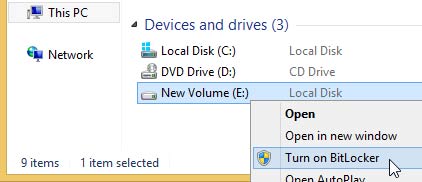
Step 8 : Copy all data folder containing TrueCrypt file that has been installed to the newly created virtual drive.
To uninstall the drive, right-click the drive and select Eject .
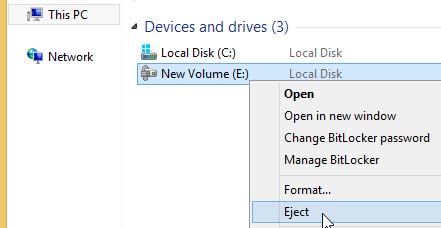
To reinstall the drive again, double click on the virtual drive file ( requires a Windows 8 or later computer ).
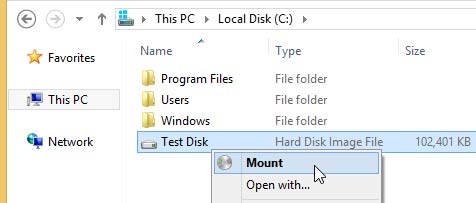
Alternatively, you can access Disk Management => Action => Attach VHD .
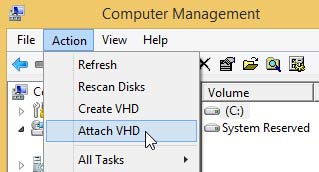
How to fix if you don't see the BitLocker icon in the right-click menu:
Method 1 : Search for BitLocker or encryption in the Start menu.
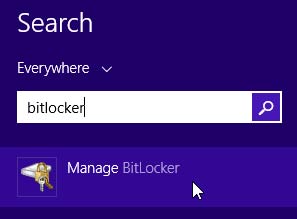
Method 2: Access System Control Panel => Get more features with a new edition of Windows . This operation will not require users to reinstall Windows.
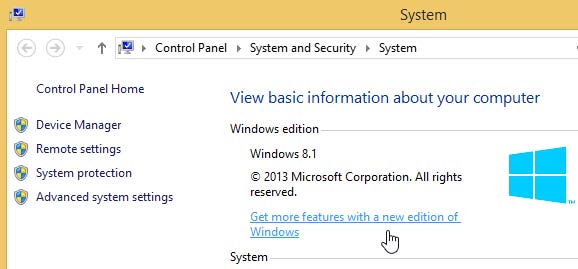
Alternatively, you can search for this option using the keyword Edition .
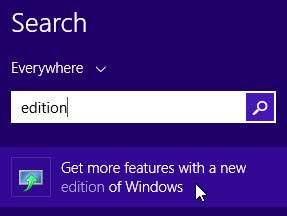
Thuy Van
You should read it
- Top 10 free software for laptops
- Symposium on IBM Security and Security 2011
- Top 20 best encryption software for Windows
- What is data encryption? Things to know about data encryption
- Awareness and experience - the most important factor in every network security process
- IBM developed a new technology to patch security holes
- What you need to know about an information security analyst
- Learn about information security engineers
May be interested
- Instructions for changing and resetting passwords for BlackBerry ID
 many users sometimes get confused when using blackberry 10, maybe you still have difficulties in changing and setting id password on blackberry 10. here i would like to guide how to change the password of blackberry id. you follow the following steps to proceed.
many users sometimes get confused when using blackberry 10, maybe you still have difficulties in changing and setting id password on blackberry 10. here i would like to guide how to change the password of blackberry id. you follow the following steps to proceed. - Keep your Google account secure 'safer'
 menus the account settings (account settings) of google have not changed, but the interface of the installer has new things. that is adding 5 important security settings to your google account.
menus the account settings (account settings) of google have not changed, but the interface of the installer has new things. that is adding 5 important security settings to your google account. - Safeguard against Shellshock security vulnerabilities
 the main advice for computer users is to always check for the latest software updates as soon as possible.
the main advice for computer users is to always check for the latest software updates as soon as possible. - 9 misconceptions about security and how to resolve
 almost every recent study of security vulnerabilities has come to the same conclusion: people are more risky factors for a business than technology gaps.
almost every recent study of security vulnerabilities has come to the same conclusion: people are more risky factors for a business than technology gaps. - Visa tips for security of ATM cards
 protect your atm card from damage by keeping it in a safe place. keep the card from being bent or scratched. remember your personal identification number (pin). when choosing a pin, avoid numbers and letters that are easy to identify or relate to you.
protect your atm card from damage by keeping it in a safe place. keep the card from being bent or scratched. remember your personal identification number (pin). when choosing a pin, avoid numbers and letters that are easy to identify or relate to you. - NoCrack makes passwords safer with 'trap' fake vault
 using management tools is the best way to generate random passwords and is highly secure for logging in to many different websites. however, the problem is that password management tools still need a master password to decrypt, access the data of the vault or safe zone containing all your passwords.
using management tools is the best way to generate random passwords and is highly secure for logging in to many different websites. however, the problem is that password management tools still need a master password to decrypt, access the data of the vault or safe zone containing all your passwords.






 Encrypt hard drive data to increase security on Linux
Encrypt hard drive data to increase security on Linux Protects Flash drive data in a comprehensive way with TrueCrypt application
Protects Flash drive data in a comprehensive way with TrueCrypt application Top 10 free software for laptops
Top 10 free software for laptops Windows 10 21H2 is about to stop supporting, Microsoft encourages users to upgrade to Windows 11
Windows 10 21H2 is about to stop supporting, Microsoft encourages users to upgrade to Windows 11 5 measures to prevent electric leakage in the heater
5 measures to prevent electric leakage in the heater